Send us your message, select the department you would like to talk to and one of our agents will get back to you as soon as possible.
- Home >
- Furniture Designers >
- Ludwig Mies van der Rohe
-
Furniture Designers
-
A
- Alain Gilles
- Andrea Ruggiero
- Anya Sebton
- Ann Demeulemeester
- Alberto Meda
- Alfredo Häberli
- Alexandre Caldas
- Archirivolto Studio
- Alain Berteau
- Alessandro Mendini
- Alexander Begge
- Armin Sander
- Anne-Mette Jensen & Morten Ernst
- Alexander Taylor
- Andreas Struppler
- Alejandro Aravena
- Antonio Citterio
- Arik Levy
- Andreas Störiko
- Achille and Pier Giacomo Castiglioni
- Andreas Farkas
- Axia Design
- Alberto Basaglia and Natalia Rota Nodari
- Andrei Munteanu
- Alexander Lorenz
- Add & And
- Armando D'Andrea
- Arge2
- Andries & Hiroko van Onck
- A. Pagani & A. Bonandrini
- Arne Jacobsen
- B
-
C
- Cassecroute
- Christian Göbel
- Claire Bataille and Paul ibens
- Corsini & Ruiz Millet
- Carlo Colombo
- Charlotte Perriand
- Claudio Bellini
- Chijioke Aguh
- Charles Pfister
- Charles & Ray Eames
- Charles Eames & Eero Saarinen
- Christophe Pillet
- Claudio Silvestrin
- Cini Boeri
- Claesson Koivisto Rune
- Cristian Gori
- Christine Schwarzer
- Charles Perry
- Cate & Nelson
- Cecilie Manz
- D
- E
-
F
- Faruk Malhan
- Fredrik Wallner
- Friis and Moltke
- Form Us With Love
- Frans de la Haye
- Frans van der Wielen
- Friso Kramer
- Fabio Novembre
- Fiorenzo Dorigo
- Foersom Hiort Lorenzen
- Frederick Scott 1942 - 2001
- Florence Knoll
- Formway Design
- Franco Albini
- Formweld Industrial Design
- Frank Gehry
- Francois Azambourg
- Frank Person
- Fabio Di Bartolomei
- Franco Poli
- Fredrik Mattson
-
G
- GamFratesi
- Gernot Oberfell
- Giulio Manzoni
- Greta Grossman
- Gubi Olsen
- Giandomenico Belotti
- Giovanni Baccolini
- Geoffrey Harcourt
- Gerhard Reichert
- Giulio Cappellini
- Gaetano Pesce
- Gianmarco Blini
- George Liarikos
- George Nelson
- Giugiaro Design
- Gio Ponti
- Gunilla Allard
- Gerhard Reichert and Eckhard Hansen
- Giorgio Marianelli
- Giotto Stoppino
- Georg Appeltshauser
- George Mileos
- Groove Design
- Guggenbichler Design
- Greutmann Bolzern
- Giancarlo Piretti
- Giovanni Levanti
- H
- I
-
J
- Jacob Jensen
- Jan Wertel
- Jesper Ståhl
- Jens Quistgaard
- Jonas Forsman
- Jones & Partners
- Josef Zetterman
- Jasper Morrison
- Jonathan Walter and Lakshmi Bhaskaran
- Jehs+Laub
- Justus Kolberg
- Jos Devriendt
- Jules Wabbes
- Jean-Marie Massaud
- Jørgen Gammelgaard
- John Coleman
- John Bollen
- James Burleigh
- Jens Risom
- Jean Prouvé
- James Irvine
- John Walsh
- Joel Karlsson
- Judith Daur
- Jonas Wagell
- Jörg Bernauer
- Jorge Pensi Design Studio
- Jerszy Seymour
- Jean Louis Iratzoki
- John Zoffmann and Hans von Hirsch
- Johan Lindau
- Jean Nouvel
- Johan Lindstén
- Jaime Hayon
- K
-
L
- Lee Broom
- Léon de Lange
- Lorenzo Damiani
- Lepper Schmidt Sommerlade
- Lieke van Gool
- Luc Vincent
- Leonardo Talarico
- Le Corbusier, Jeanneret and Perriand
- Louise Campbell
- Lella and Massimo Vignelli
- Ludwig Mies van der Rohe
- Läufer + Keichel
- Lievore Altherr Molina
- Luigi Massoni and 967
- Luca Scacchetti
- Love Arbén
- Lucidi e Pevere
- Lucy.D Design Studio
- Luca Bressan
- Lorenz * Kaz
-
M
- Matali Crasset
- Mathieu Matégot
- Mia Wahlstein
- Mika Tolvanen
- Meyer en van Schooten Architecten
- Michele De Lucchi
- Mario Botta
- Michiel van der Kley
- Mark Gabbertas
- Martin Ballendat
- Marc Newson
- Marcel Wanders
- Michela Catalano and Ilaria Marelli
- Manfred Elzenbeck & Klaus Haar
- Max Lamb
- Massimo Mariani
- Matthias Demacker
- Mueller Kneer
- Marcel Breuer
- Markus Dörner
- Mathias Seiler
- Michael Klasener
- Modus Product Design
- Mario and Claudio Bellini
- Maarten Van Severen
- Monica Förster
- Michele De Lucchi and Silvia Suardi
- Marco Maran
- Marco Acerbis
- Matthias Dohm
- Morten Voss & Christian Hedlund
- Marc Sadler
- Mac Stopa
- Maly Hoffmann Kahleyss
- Mario Ruiz
- Massimiliano and Doriana Fuksas
- Mr. Smith Studio
- Morten Nikolajsen
- Mia Lagerman
- Mia Cullin
- Marcelo Alegre
- N
- O
-
P
- Paul Leroy
- Paolo Rizzatto
- PearsonLloyd
- Pio Manzù
- Paolo Pininfarina
- Pierre Paulin
- Paul Brooks
- Patrick Norguet
- Piero Lissoni
- Philippe Starck
- Professor Rido Busse
- Poul M. Volther
- Perin & Topan
- Paolo Favaretto & Partners
- Paolo Favaretto & Nicola Zocca
- Pascal Mourgue
- Pelikan Design
- Pierluigi Cerri
- Peter Marino
- Pietro Arosio
- Paul Crofts Studio
- Patrick Jouin
- Porsche Design Studio
- Professor Jorgen Kastholm
- Professor Luigi Colani
- Pieter Jamart
- Paolo Nava
- Peter Maly
- Peter Brandt
- Peter Molin
-
R
- Ratio Design Associates
- Robert Dudley Best
- Rolf Fransson
- Ruud Ekstrand
- Riccardo Blumer
- René Holten
- Rodolfo Dordoni
- Rodolfo Dordoni and Giulio Cappellini
- Ronan Bouroullec
- Roberto Danesi
- Rene Hougaard
- Rud Thygesen and Johnny Sorensen
- Rüdiger Schaack
- Ron Arad
- Ronan & Erwan Bouroullec
- Roland Zünd
- Roger Webb Associates
- Robert de le Roi
- Raul Barbieri
- Richard Sapper
-
S
- Sakura Adachi
- Sas Adriaenssens
- Sottsass Associati
- Stefan Borselius
- Stina Sandwall
- Studio Kairos
- Satyendra Pakhale
- Shiro Kuramata
- Sigurd Rothe
- Studio Hannes Wettstein
- Shin and Tomoko Azumis
- Sir David Chipperfield
- Sir Kenneth Grange
- Simon Pengelly
- Shelton, Mindel & Associates
- Speziell
- SANAA
- Sori Yanagi
- Stefan Diez
- Studio Cerri & Associati
- Studio Makkink & Bey
- Søren Rose
- Shea + Latone
- Stefan Heiliger
- Syn Design
- Stefano Giovannoni
- Stefano Getzel
- Sergio Mori
- Setacomincini
- Setsu and Shinobu Ito
- Sergio Lion
- Staffan Holm
- T
- U
- V
- W
- X
- Y
- o
-
A
Ludwig Mies van der Rohe
Regarded as one of the most important figures in the history of architecture, Ludwig Mies van der Rohe’s ‘less-is-more’ approach to design was the gold standard for many generations of modern architecture. His... Read more legendary career started humbly at his father’s stonemasonry business, giving him an early appreciation of material and structure. From there he apprenticed with furniture designer Bruno Paul in Berlin before joining the office of Peter Behrens, an architect and painter at the forefront of the modern movement.
In 1912, Mies established his own office in Berlin. Through furniture, residential projects and extraordinary, yet unrealized concepts for skyscrapers, he gained recognition as a leader of the German modern movement. As such, he was selected to design the German Pavilion at the Barcelona Industrial Exposition of 1929. His design, a rhythmic arrangement of horizontal and vertical planes of glass, stone and metal was an experiment in free flowing space. With no discernible distinction between rooms or inside and outside, the design fundamentally challenged the architectural ‘boxes within a box’ standard of the time. Inside, Mies included the Barcelona Chair and Ottoman, designed to offer the King and Queen of Spain to a place to rest (they in fact never sat down). The Barcelona Pavilion and the chairs it contained are universally recognized as milestones of modern design.
Mies served as Vice President of the Deutsher Werkbund and Director of the Bauhaus from 1930 until it closed in 1933. He immigrated to the United States in 1938 to become the director of architecture at the Armour Institute (later the Illinois Institute of Technology). From his Chicago-based practice, Mies designed a portfolio of buildings that changed the face of American institutional architecture ― the most notable examples being the IIT campus and the Seagram Building in New York. While at IIT he befriended and mentored a young Florence Knoll. Florence has always credited Mies as her most influential instructor, and, in 1948, Mies granted Knoll exclusive rights to produce his furniture, including the Barcelona collection, the Brno chair, and MR series.
Read more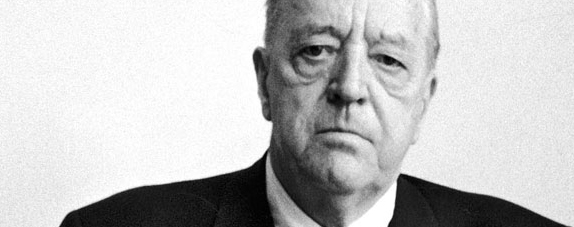
Ludwig Mies van der Rohe Furniture Designs
-
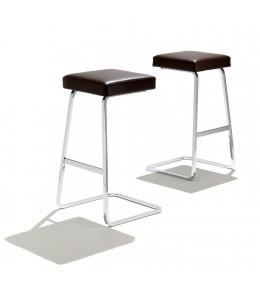
Four Seasons Stools
Four Seasons Bar Stools are both classic and modern. Can be upholstered in textiles or Spinneybeck leather.
-
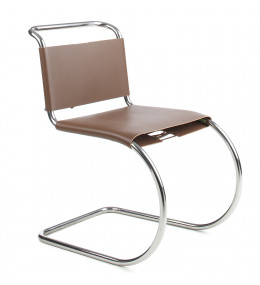
Mr Chair
Mr Chair is a cantilever seat great for reception areas, lobbies and as a visitors chair.
-
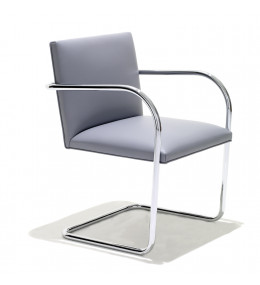
Tubular Brno Chair
Tubular Brno Cantilever Chair is meeting seating for conferences. Made with Spinneybeck leather available in 500 colours.
-
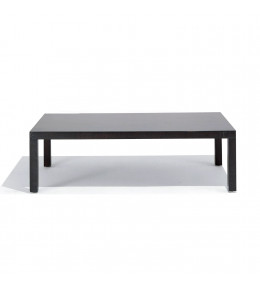
Krefeld Table
Krefeld Table was produced in collaboration with the Museum of Modern Art.
